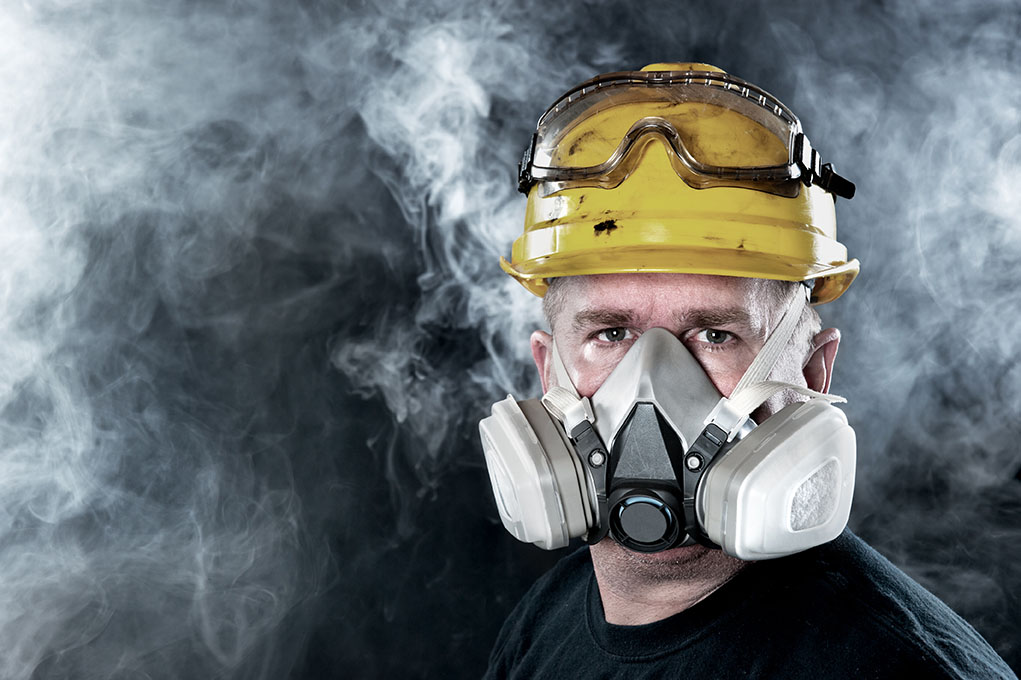Respiratory protection in the workplace protects employees from hazardous gases and vapors, oxygen deficiency, and airborne particles. An estimated five million workers in the United States are required to wear respirators on the job. If an employer provides their workers with respirators, they must have a site-specific written respiratory protection program. This should include:
- A respirator selection process
- Employee training records
- Employee medical evaluation reports
- Fit test results
- Filter change schedules
- Evaluations of hazardous atmospheres
- Program evaluations
The employer must keep these records on file and available for employees, representatives, and inspectors to review upon request.
Types of Respirators
There are two major classes of respirators. Air-purifying respirators remove contaminants from the air, while atmosphere-supplying respirators provide clean, breathable air from an uncontaminated air supply. Respirators can be either tight fitting or loose fitting. Tight fitting respirators include filtering facepieces, half masks and full facepieces that don’t completely cover the head. Loose respirators are hoods or helmets that cover the head completely. All respirators used in the workplace must be approved by the National Institute for Occupational Safety and Health (NIOSH).
Atmospheric Contaminants
Respirators protect workers from a wide variety of hazardous environments. Respirators can enable employees to safely work around harmful dusts, fogs, smokes, mists, fumes, gases, vapors, or sprays. Without proper respiratory protection, many airborne hazards could cause cancer, lung impairment, other diseases, and even death.
Training Programs
The Occupational Safety and Health Administration, or OSHA, requires that all employees be fully trained on respiratory protection before they begin work with their respirator. Before workers begin training, they must first pass a medical evaluation. Because respirators can make breathing difficult or induce feelings of claustrophobia, not everyone can wear a respirator. Respiratory impairment, cardiovascular impairment, anemia, epilepsy, punctured eardrums, diabetes, and vision problems can all prevent a worker from using a respirator. Medical evaluations must be performed by a qualified medical professional in a confidential setting. The most respiratory-related safety citation issued by OSHA is failure to provide a medical examination before requiring an employee to work with a respirator.
After workers have passed their medical evaluations, they must be trained on the specific hazards that their respirator protects against and how to properly clean, maintain, and dispose of their respirator. Workers must be given a fit test to ensure that their respirator is the correct size and forms an adequate seal. They must also be trained on how to properly wear their respirator, including how to put it on, take it off, and check the fit. Employees must be retrained once per year, or if they show inadequate knowledge of any part of the respiratory protection program.
Respirator Safety Tips
Workers who use respirators should always inspect their respirator and perform a seal check before every use. Employees should be trained on and adhere to their company’s filter replacement schedule. Many filters have color-changing end-of-service-life indicators that alert users when filters must be changed. Common signs of respirator failure include strange chemical smells or tastes, or burning sensations in the eyes, nose or throat. Other common signs include feelings of dizziness or nausea, difficulty breathing, and noticeably hot air inside the respirator. If a worker experiences any of these symptoms, they should leave the area immediately, remove the respirator, and wait to see if their symptoms improve. If symptoms improve, they should perform a full inspection and seal check before re-entering the area. If symptoms persist, they should leave the area and inform their supervisor that their respirator is not working properly.
Respiratory Protection Summary
Respirators protect employees from hazardous atmospheres and airborne contaminants in the workplace. Before receiving a respirator, employees must pass a medical evaluation given by a medical professional in a confidential setting. Then, they must be fully trained on various aspects of their respirator and the hazards that are present in their work environment. Employees should fully inspect their respirators before each use and keep up with their facility’s filter change and respirator maintenance schedules. They should also recognize the signs of respirator failure and report any signs of failure to their supervisors immediately.
For more information, follow these links:
- OSHA – Respiratory Protection
- U.S. Department of Health – Respiratory Protection
- U.S. Department of Health – Respiratory Protection FAQs
- U.S. Department of Health – Respirator Presentation


